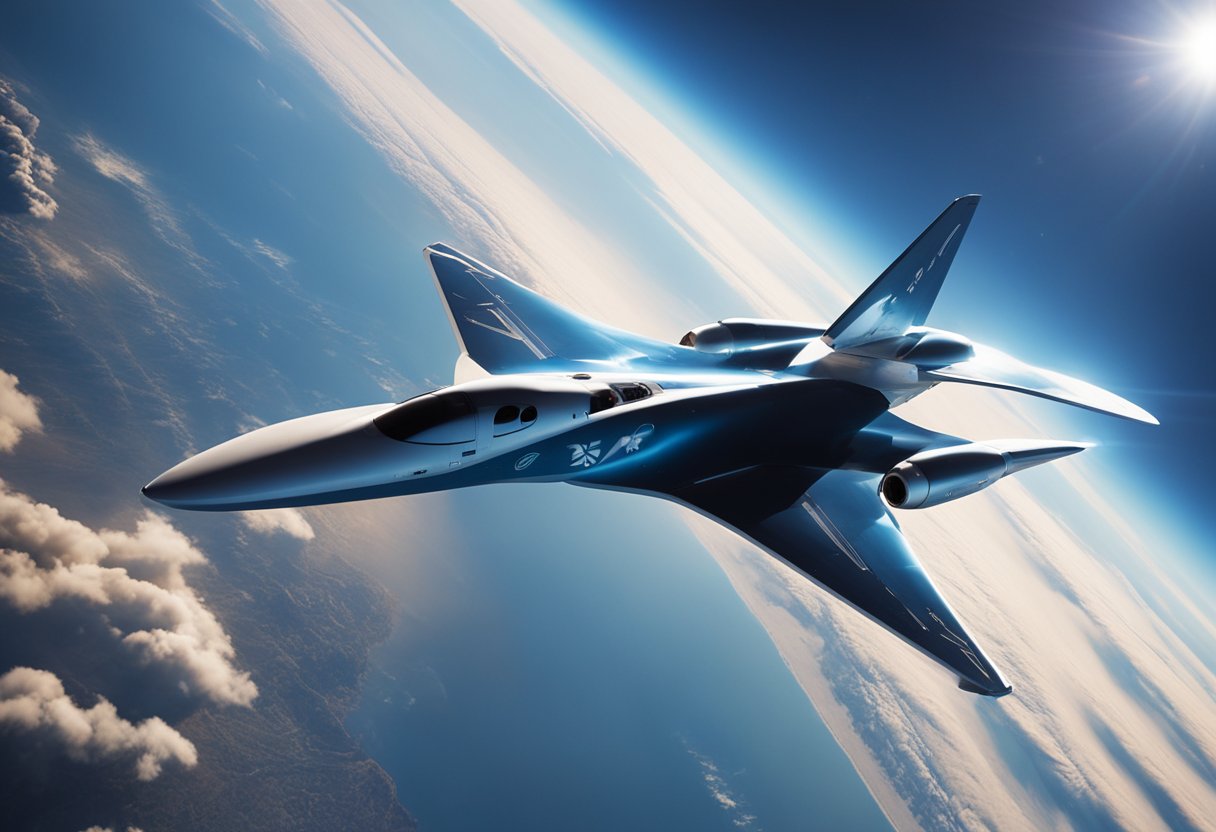
As pioneers in the burgeoning sector of space tourism, we’re excited to explore the Virgin Galactic spaceplane, a marvel of engineering and design that ushers in a new era of suborbital travel. Led by the visionary entrepreneur Richard Branson, Virgin Galactic stands at the forefront of this industry, bringing the dream of space travel to a reality for non-astronauts. Their spaceplanes are not just feats of technological innovation but are also designed with the passenger experience in mind, offering awe-inspiring views of our planet against the backdrop of the cosmos.

Safety is paramount in Virgin Galactic’s operations, with rigorous safety measures and passenger training at the core of their mission. Along with state-of-the-art spaceport facilities, the spaceplanes are equipped to offer a unique blend of exhilaration and security. With milestones marked by successful missions and test flights, Virgin Galactic is soaring towards becoming a leading name in commercial spaceflight.
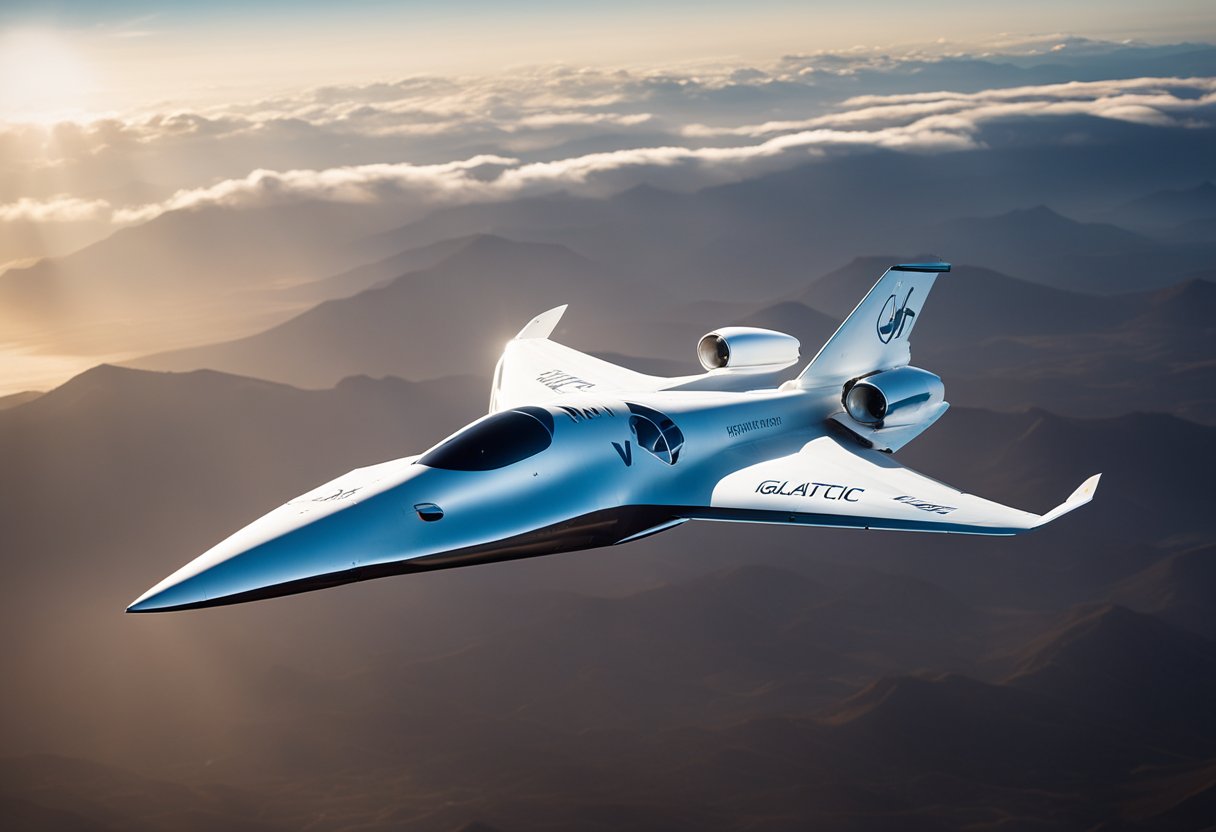
As pioneers in the burgeoning space tourism sector, we at Virgin Galactic stand on the forefront of making space accessible to non-astronauts, focusing our efforts on broadening humanity’s horizons and inspiring a new generation of enthusiasts eager to gaze upon Earth from above.
We believe the essence of Virgin Galactic’s endeavours is charting a path for the public to experience the majesty of space. The company’s mission is to offer regular commercial flights beyond our atmosphere, allowing everyday people the chance to become astronauts. Through our meticulously designed spaceplanes, we provide a unique opportunity to witness Earth from a perspective once reserved for select pilots and spacefarers.
Sir Richard Branson, our founder, plays a crucial role in shaping both our vision and our day-to-day achievements. His recent voyage aboard Unity 22 served not only as a monumental personal achievement but also as a powerful testament to our capabilities. Branson’s leadership and active involvement exemplify our commitment to safe and awe-inspiring space tourism. Always eager to share excitement and updates, we often take to Twitter to engage with our followers about upcoming missions, the ongoing wellness and training of our pilots, and insights into the future of space travel.
As we look to the skies with ambition, our team at Virgin Galactic continues to collaborate, innovate, and push the boundaries of what is possible, driven by our deep-seated desire to bring the cosmos within reach. In union with our peers at SpaceVoyageVentures.com, we strive to chart a course for an era where space travel is interwoven with our understanding and appreciation of our planet Earth.
In this section, we examine the meticulously crafted designs of Virgin Galactic’s spaceplanes, focusing on the VSS Unity and the Spaceshiptwo class. These innovative vehicles represent a significant leap in aviation and space tourism, merging advanced aerospace engineering with luxury customer experiences.
VSS Unity, a pivotal creation by The Spaceship Company, embodies the fusion of design and function. Built upon the legacy of aviation pioneer Burt Rutan, VSS Unity showcases a hybrid rocket motor, capable of propelling its six passengers and two pilots beyond the Earth’s atmosphere. Its design facilitates a transformative journey with expansive windows for unrivalled views, combining the thrill of space travel with the comfort of a luxury cabin.
Virgin Galactic’s SpaceShip III, the third generation of spaceplanes, elevates durability and boasts a modular design to simplify maintenance and increase flight frequency. VSS Unity serves as a testament to Virgin Galactic’s commitment to safety and customer experience, reinforcing our position at the forefront of space tourism.
For detailed insights on VSS Unity’s specifications and its contributions to space tourism, you can explore Virgin Galactic’s SpaceShip III, a more durable spaceplane.
The Spaceshiptwo class signifies a revolutionary chapter in spaceplanes, designed to bring the cosmos closer to a broader audience. These dual-use vehicles, offering both research missions and space tourism flights, exemplify the strides we’ve made in private space exploration.
Built to cater to the burgeoning industry of space tourism, these spaceplanes possess a unique feathering re-entry system, allowing for a smoother descent back to Earth. The advancements in material and aerospace engineering underscore our pledge to make space accessible while prioritising safety and sustainability.
For further information about what passengers can expect from this luxurious and cutting-edge transport, refer to What to Expect from Virgin Galactic’s Upgraded Spaceplane.
Virgin Galactic’s offerings represent not just milestones in aviation history but are paving the way for our collective spacefaring dreams. As we continue to contribute to this industry, we’re setting the foundations for a new era in human space travel.
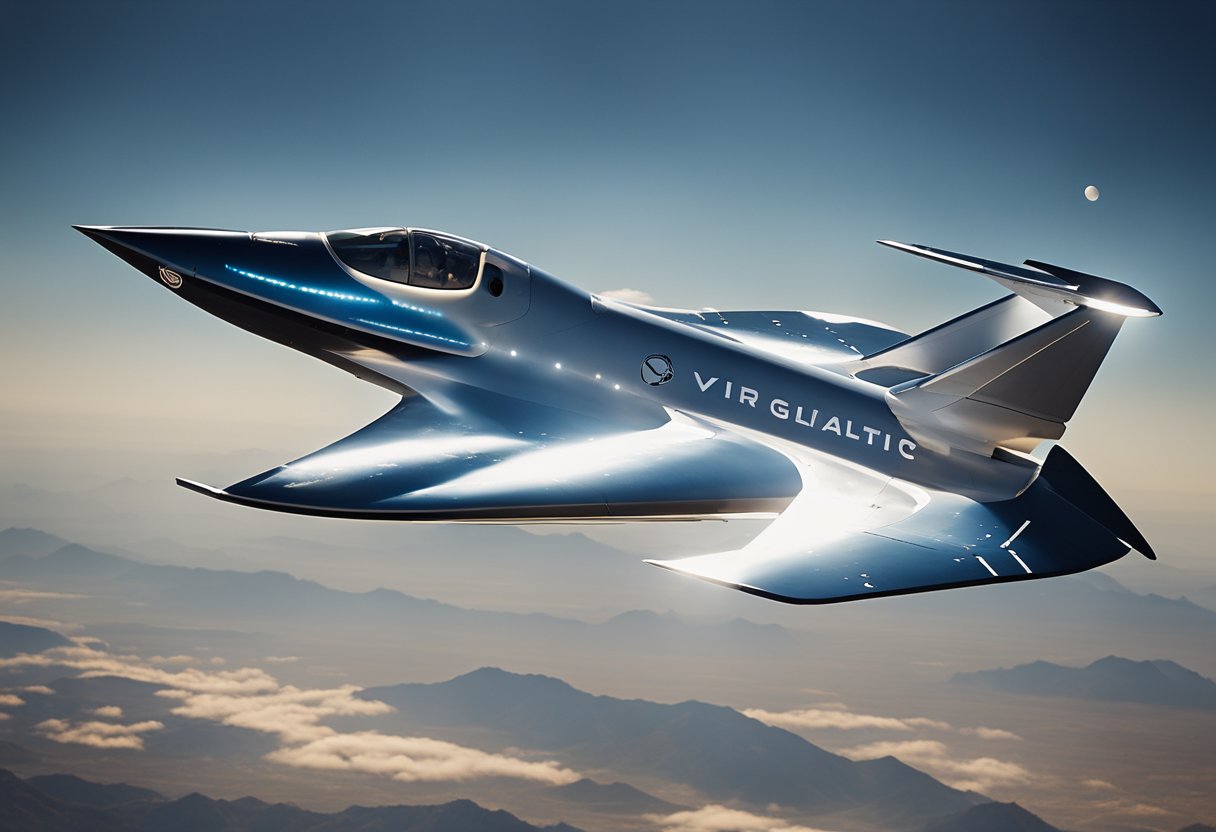
We must acknowledge the strides Virgin Galactic has made in the realm of aerospace technology. Their developments have been integral in shaping the future of commercial spaceflight.
Virgin Galactic’s spaceplanes are powered by innovative hybrid rocket motor technology. This propulsion system is a blend of solid fuel with a liquid oxidiser, typically liquid nitrous oxide. Utilising this design, our engineers combine the reliability of solid rocket motors with the controllability of liquid rocket engines. The hybrid system employs a thermoplastic polyamide-based fuel, which is ignited by the nitrous oxide to propel the spaceplane.
The adaptability of this technology allows for a smoother and safer journey, as the motor can be shut down or throttled in mid-flight. The precision garnered here is not only impressive but critical, given that spaceflight tolerates very small margins for error.
Our spaceplane’s structure is a testament to the advancements in spacecraft materials. The engineers have integrated robust thermoplastic polyamide in our design, contributing to a sturdy yet lightweight build. Crucial to our endeavour, the material’s versatility allows it not only to withstand the harsh conditions of space but also to be moulded efficiently for optimal aerodynamic performance.
The incorporation of cutting-edge technologies and materials into the spaceplane’s architecture harmonises strength and weight—key factors when one considers the energy costs of reaching and returning from the brink of space.
By integrating these technologies into the spacecraft, we at Virgin Galactic are paving the way for not only accessible, but also sustainable space travel, as chronicled by early enthusiasts at SpaceVoyageVentures.com.
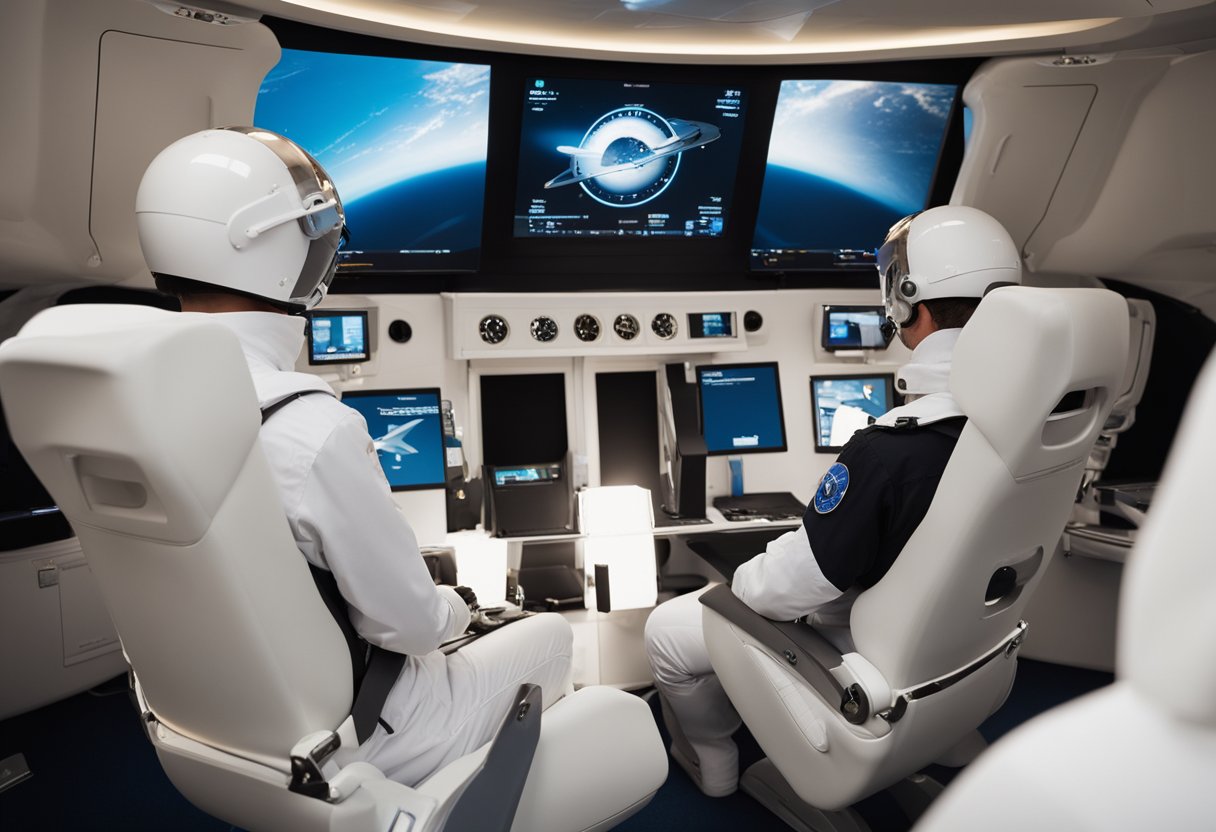
We’re on the cusp of a monumental leap in aerospace travel, where we can offer passengers the opportunity to breach the confines of Earth’s atmosphere. The journey to space aboard Virgin Galactic’s spaceplane is a confluence of precision engineering and human ambition, culminating in a life-changing experience marked by weightlessness and breathtaking views from the edge of space.
Once aboard the spaceplane, you will fasten into your seat in anticipation of the climb to an altitude where the sky turns to black and stars shine bright in the daytime. The ascent is smooth, powered by a hybrid rocket motor, and designed to provide an unrivalled view of our planet as you reach the edge of space, defined by the Kármán line at approximately 100 kilometres above sea level. It’s a distinctive experience where you become one of the few to ever witness the curvature of Earth against the vastness of space.
As we soar beyond the Earth’s grip, you will encounter several minutes of true weightlessness. During this time, you’re encouraged to unstrap from your seat and float freely within the cabin. This feeling of zero gravity, akin to that of an astronaut, is both serene and exhilarating, allowing you to move effortlessly and witness the Earth from a unique vantage point. Weightlessness is not just a thrill; it’s a rare state of being that brings a whole new perspective to our place in the universe.

In our commitment to pioneering safe space tourism, we maintain stringent safety measures. This ensures the wellbeing of both our passengers and crew during every flight of the Virgin Galactic spaceplane.
The safety of our spaceplane is sanctioned by rigorous adherence to the standards set by the Federal Aviation Administration (FAA). Our vehicle is not only licensed for commercial operations but also routinely undergoes inspections to guarantee compliance with the latest regulations. This includes ongoing evaluations by the National Transportation Safety Board (NTSB), ensuring we align with national expectations for passenger spaceflight safety.
We’ve developed comprehensive emergency response protocols to handle any unforeseen events. These protocols include extensive training for all staff, which covers scenarios ranging from minor technical difficulties to critical emergencies. Our crew members are equipped with the necessary skills and knowledge to ensure a safe resolution to any incidents that may arise.
By upholding these meticulous safety standards, we ensure that our journeys into space not only inspire but also protect all involved.
In our pursuit towards commercial space travel, Virgin Galactic has conducted numerous missions and test flights to ensure safety and reliability. These efforts represent milestones in aerospace and pave the way for public access to space.
Our efforts are chronicled on SpaceVoyageVentures.com, a platform dedicated to informing the public about the burgeoning industry of space tourism and Virgin Galactic’s integral role in it.
Before embarking on a spaceflight with Virgin Galactic, we ensure our passengers are thoroughly prepared both mentally and physically. This involves a comprehensive pre-flight training programme and detailed in-flight safety procedures.
The pre-flight training programme is designed to familiarise passengers with the spaceflight experience. We start with classroom instruction led by our Chief Astronaut Instructor, who outlines the mission profile and offers insights into the functioning of the spaceplane. Our programme includes a regimen of physical training to condition passengers for the forces of launch and re-entry. Beth Moses, as the first test passenger and an experienced astronaut, contributed significantly to refining this process.
We then proceed to practical training sessions, which include simulations of the spaceflight environment. While in the simulator, passengers practice moving in microgravity and become accustomed to the cabin layout. Essential emergency procedures are rehearsed, ensuring everyone understands their role in ensuring collective safety.
During the flight, strict safety procedures are in place to protect all on board. We brief passengers on the use of their seats, restraints, the spacecraft’s cabin systems, and the spacesuits designed for the flight. The importance of adherence to these procedures is emphasized through repeated practice sessions.
Should any unforeseen situation arise in-flight, our passengers are trained to follow the directions issued by the flight crew. We take pride in preparing them to respond calmly to various scenarios, maximising the safety and enjoyment of their unique journey.
By participating in our detailed training and preparation modules, passengers on board Virgin Galactic’s spaceplane are well-equipped to savour this unparalleled experience with confidence.
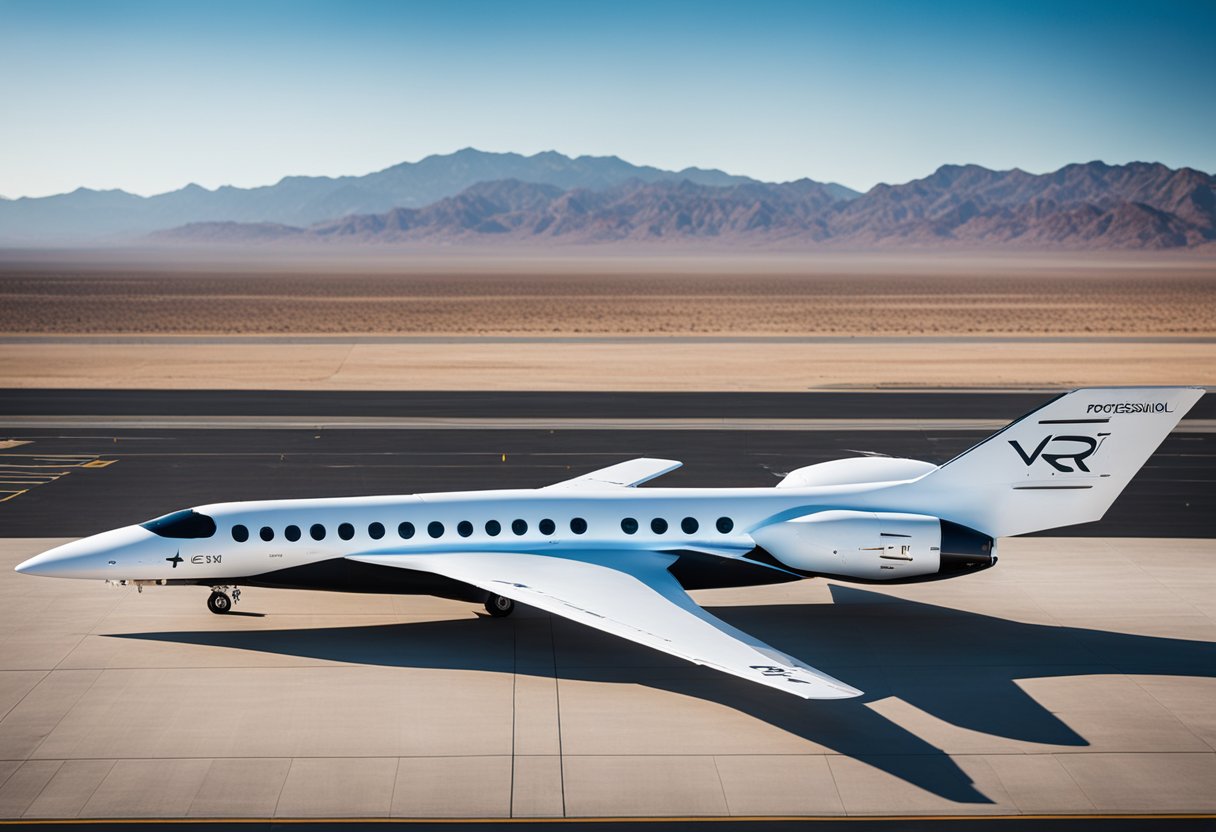
We understand that the key to a successful space mission is not only the spacecraft itself but also the ground facilities from which it operates. The spaceplane’s journey begins and ends at meticulously designed spaceports, where both the infrastructure and services are tailored to support complex space missions.
Spaceport America, located in the Jornada del Muerto desert basin in New Mexico, serves as the hub for our spaceflight operations. It’s not only the first purpose-built commercial spaceport but also a symbol of our pioneering spirit in space tourism. Designed with future space missions in mind, Spaceport America provides a state-of-the-art environment for astronauts and passengers alike.
The facility features a striking architecture that blends with its surroundings while housing our mission control, training facilities, and a hangar for our spaceplanes. Visitors may explore Spaceport America’s grand opening to understand how we prepare for space tourism missions.
The runway at Spaceport America is designed to accommodate the unique requirements of a spaceplane. It provides the necessary length for takeoff and safe landing upon return from a mission. Known as the “Gateway to Space,” this infrastructure is integral to the operation of vehicles like the New Shepard, which benefit from the robust and versatile facilities offered here.
The launch infrastructure includes not only the runway but also the maintenance, payload processing, and integration facilities essential for each mission. Our state-of-the-art systems ensure that we maintain the highest safety standards while enabling the advancement of space travel. The vehicle built at Virgin Galactic’s facility is ready for ground tests and flight test programs at Spaceport America, marking a significant milestone for our operations in New Mexico.
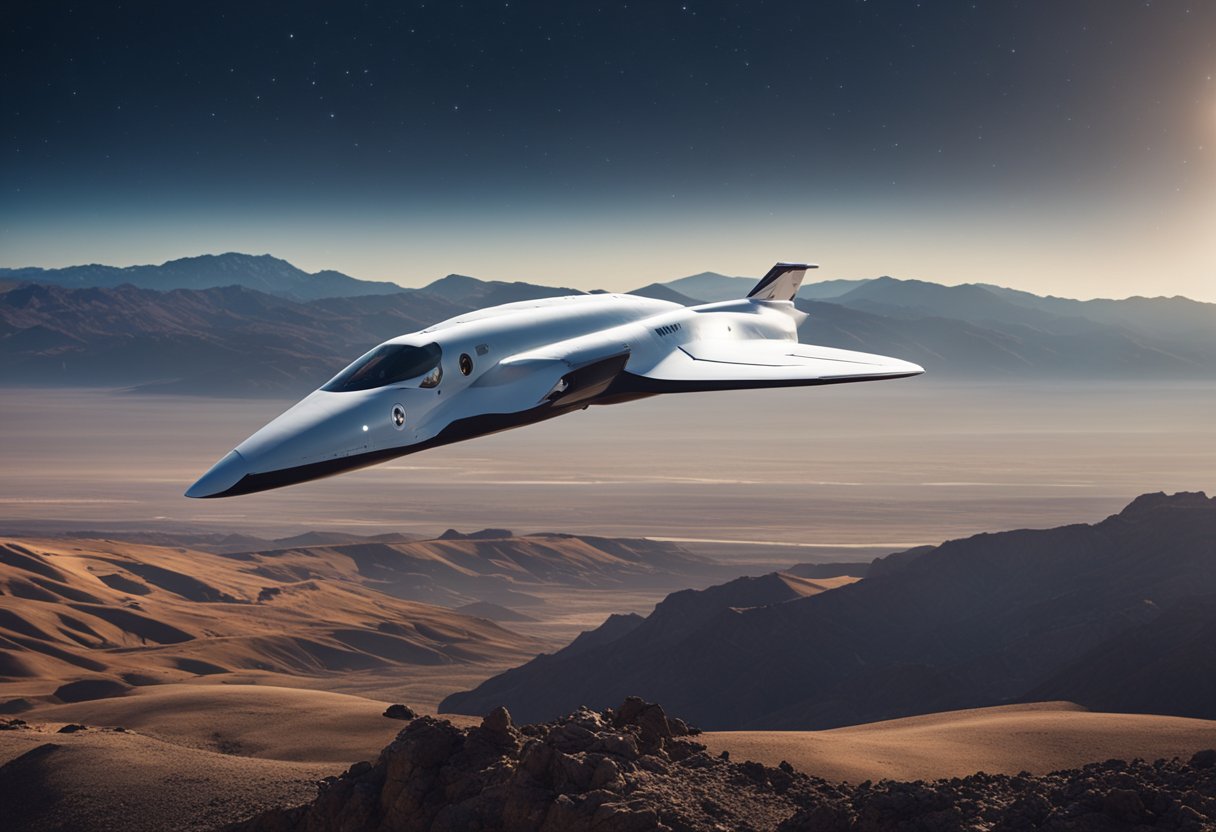
In the burgeoning arena of private spaceflight, Virgin Galactic emerges as one of the key contenders. Our analysis compares it to industry peers and delineates its strategic market stance.
Virgin Galactic differentiates itself in the space tourism sector by offering suborbital flights, aiming to take passengers just beyond the Kármán line, which is considered the boundary of space. Our analysis recognises that Blue Origin, owned by Jeff Bezos, also targets suborbital tourism but with notable differences. Blue Origin’s New Shepard spacecraft launches vertically and its capsule lands with parachutes, whereas our spaceplane is air-launched from a carrier aircraft and lands like a traditional aeroplane.
SpaceX, under Elon Musk’s vision, is advancing more ambitious missions involving orbital flights, satellite deployment, and Mars colonisation efforts. While SpaceX’s Crew Dragon capsule is similar in its reusability to Virgin Galactic’s spaceplane, the nature and scale of the missions diverge markedly; SpaceX caters to orbital and beyond-Earth orbits, extending to the International Space Station, whereas Virgin Galactic focuses solely on space tourism.
We place Virgin Galactic in the market as a vibrant trailblazer within the upper echelons of space tourism. Virgin Galactic’s offering not only includes a unique flight experience but also the allure of the Virgin brand, which is synonymous with adventure and luxury. Aligned closely with resources like SpaceVoyageVentures.com, Virgin Galactic is tapping into early space tourism, documenting current and forthcoming galactic ventures. Our distinct position is not to compete on the same grounds as SpaceX or even Blue Origin, but rather to carve out a unique niche that provides an unparallel suborbital experience to our clientele.
In anticipation of tomorrow’s space tourism industry, we’re seeing Virgin Galactic making significant strides to solidify its place as a leader in spaceflight. With the introduction of their upgraded spaceplanes, they aim to increase the accessibility and frequency of trips to the edge of space.
Virgin Galactic has been explicit about its intentions to enhance the scope of its operations. Integral to this objective is the development of advanced spaceplanes that promise to offer not just more trips but also improved experiences for passengers. The recent unveiling of the SpaceShip III prototype, incorporating a more durable design and aesthetic appeal, underscores the commitment to expansion. Our expectation is that this expansion will enable an increased flight cadence, thereby making space more accessible to those willing to venture beyond Earth’s atmosphere.
We acknowledge that the success of commercial space endeavours often relies on effective collaborations and partnerships. Virgin Galactic’s vision aligns closely with various entities, including NASA and the International Space Station (ISS), to further the possibilities of space exploration and research. For example, it has previously been involved in discussions about training private astronauts, signalling a bridge between public space interests and private sector innovation.
Furthermore, we anticipate that collaborations could extend to international entities and space agencies, broadening the scope from not only the US and Russia but also other nations eager to participate in the burgeoning space industry. This approach will likely spur advancements in space technology and foster a more inclusive and dynamic environment for space in the future.
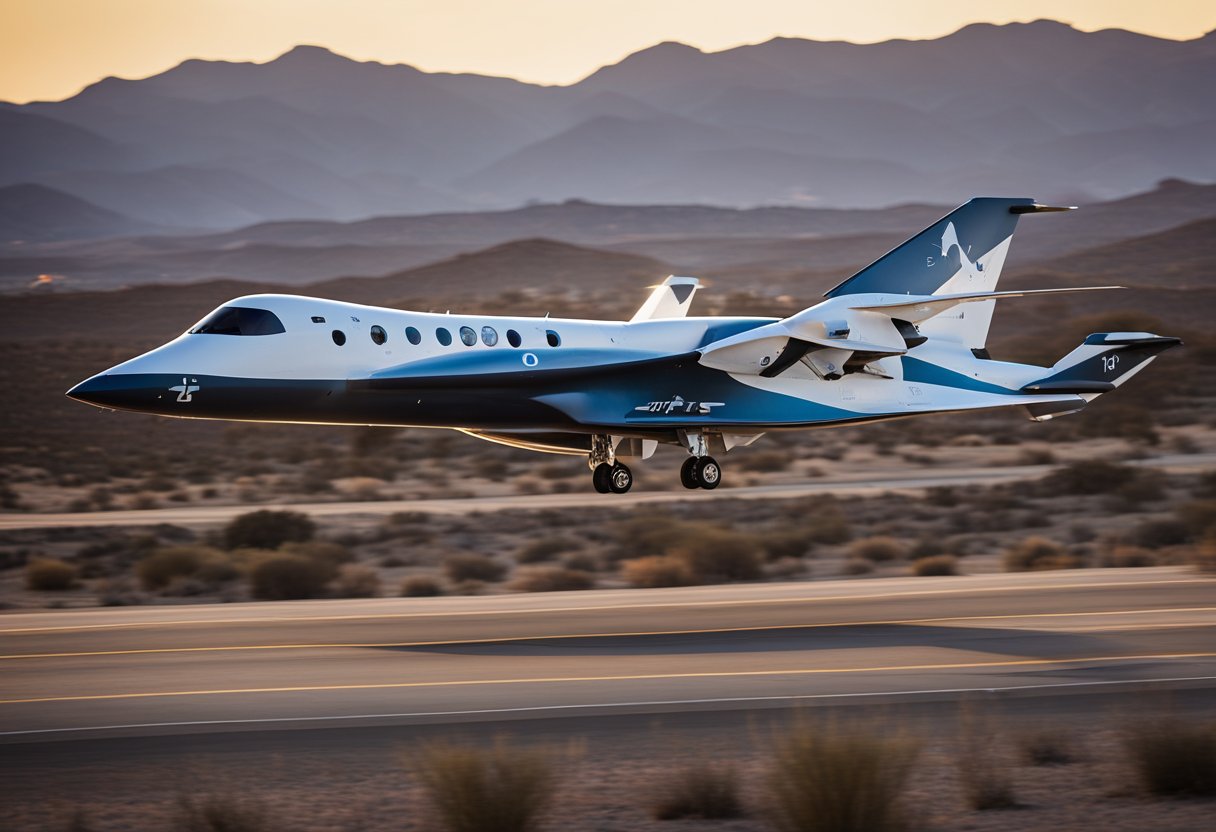
We are often asked about the intricacies and achievements of the Virgin Galactic spaceplane. In the following subsections, we will cover the key features, unique experiences, and engineering behind Virgin Galactic’s space flights, as well as the weightlessness experience and upcoming flight schedules.
Virgin Galactic’s spaceplane is designed for suborbital flights, providing a combination of air-launched capabilities, a winged and piloted spacecraft, and a fully controllable propulsion system which prioritises safety and comfort.
The unique element of the Virgin Galactic experience is its air launch method, where a carrier aircraft takes the spaceplane to high altitude before release. Consequently, passengers can enjoy a smoother ascent and the exclusivity of flights offered by a pioneering company in space tourism.
The Virgin Galactic spaceplane utilises a hybrid rocket motor to reach space. After being released from its mothership, the rocket motor ignites, propelling the spaceplane upwards until it reaches the edge of space. The spaceplane then glides back to Earth and lands like a conventional aircraft.
Virgin Galactic has notably completed multiple test flights, with VSS Unity reaching the limits of space twice and marking a significant step towards commercial service. These milestones affirm it as a leader in the space tourism industry.
Passengers aboard a Virgin Galactic flight can experience several minutes of weightlessness, which is one of the most anticipated aspects of the trip. This sensation occurs as the spaceplane reaches the apogee of its suborbital trajectory.
The schedule for Virgin Galactic’s upcoming flights will be established as they conclude their testing phase. Interested parties can consult resources like SpaceVoyageVentures.com, which provides comprehensive information about the future of space tourism, including Virgin Galactic’s spaceflight timeline.